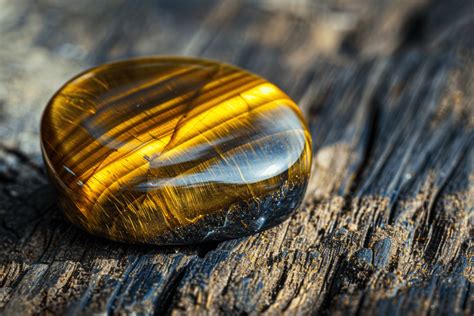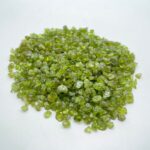Quartz is one of the most abundant minerals on Earth. It is found in a wide variety of geological settings and in a diverse range of crystal habits. The name “quartz” is derived from the German word “quarz,” which, in turn, is derived from the Slavic word “kvarc.” The word “kvarc” is thought to mean “hard,” which is a reference to the mineral’s hardness.

Etymology of the Name Quartz
The name “quartz” was first used in the 16th century by the German mineralogist Georgius Agricola. Agricola used the name to refer to a hard, translucent mineral that was found in association with ores of silver and lead. In the 18th century, the French mineralogist Jean-Baptiste Romé de l’Isle used the name “quartz” to refer to a specific mineral species that was characterized by its hardness, its conchoidal fracture, and its hexagonal crystal habit.
Composition and Structure of Quartz
Quartz is composed of silicon dioxide (SiO2). It is a hard mineral with a Mohs hardness of 7. Quartz is also a piezoelectric material, which means that it can generate an electric charge when it is subjected to mechanical stress. Quartz is the most abundant mineral in the Earth’s crust. It is found in a wide variety of geological settings, including igneous, metamorphic, and sedimentary rocks. Quartz is also found in veins and pegmatites.
Crystal Habits of Quartz
Quartz can occur in a variety of crystal habits. The most common crystal habits are hexagonal prisms, dipyramids, and rhombohedra. Quartz crystals can be transparent, translucent, or opaque. They can also be colored by impurities. The most common colors of quartz are white, clear, pink, purple, and yellow.
Uses of Quartz
Quartz is used in a wide variety of applications. It is used as a gemstone, an abrasive, and a piezoelectric material. Quartz is also used in the production of glass, ceramics, and concrete.
Gemstone
Quartz is a popular gemstone. It is used in a wide variety of jewelry, including rings, earrings, bracelets, and necklaces. Quartz is also used in carvings and other decorative objects.
Abrasive
Quartz is a hard mineral that is used as an abrasive. It is used in a variety of products, including sandpaper, grinding wheels, and polishing compounds.
Piezoelectric Material
Quartz is a piezoelectric material. This means that it can generate an electric charge when it is subjected to mechanical stress. Quartz is used in a variety of devices, including watches, clocks, and sensors.
Other Uses
Quartz is also used in the production of glass, ceramics, and concrete. Quartz is used as a flux in the production of glass. It is also used as a filler in the production of ceramics. Quartz is used as an aggregate in the production of concrete.
Benefits of Quartz
Quartz has a number of benefits. It is a hard, durable mineral that is resistant to scratching and abrasion. Quartz is also a piezoelectric material, which means that it can generate an electric charge when it is subjected to mechanical stress. Quartz is also a good thermal conductor.
Hardness and Durability
Quartz is a hard, durable mineral that is resistant to scratching and abrasion. This makes it a good choice for use in jewelry, countertops, and other applications where durability is important.
Piezoelectric Properties
Quartz is a piezoelectric material. This means that it can generate an electric charge when it is subjected to mechanical stress. This property makes quartz useful in a variety of devices, including watches, clocks, and sensors.
Thermal Conductivity
Quartz is a good thermal conductor. This means that it can transfer heat quickly and efficiently. This property makes quartz useful in a variety of applications, including solar panels and heat sinks.
Common Mistakes to Avoid
There are a few common mistakes that people make when working with quartz. These mistakes include:
- Using quartz in applications where it is not suitable. Quartz is a hard, durable mineral, but it is not suitable for all applications. For example, quartz should not be used in applications where it will be subjected to high temperatures or corrosive chemicals.
- Not cleaning quartz properly. Quartz can be damaged by dirt, dust, and other contaminants. It is important to clean quartz regularly to keep it looking its best.
- Storing quartz improperly. Quartz can be damaged by exposure to extreme temperatures and humidity. It is important to store quartz in a cool, dry place.
FAQs
Here are some frequently asked questions about quartz:
What is quartz?
Quartz is a hard, durable mineral that is composed of silicon dioxide (SiO2).
What are the different types of quartz?
There are many different types of quartz, including clear quartz, rose quartz, smoky quartz, and amethyst.
What are the uses of quartz?
Quartz is used in a wide variety of applications, including jewelry, countertops, and electronic devices.
What are the benefits of quartz?
Quartz is a hard, durable mineral that is resistant to scratching and abrasion. It is also a piezoelectric material, which means that it can generate an electric charge when it is subjected to mechanical stress.
How do I clean quartz?
Quartz can be cleaned with a mild detergent and water. It is important to rinse quartz thoroughly after cleaning to remove any residue.
How do I store quartz?
Quartz should be stored in a cool, dry place. It is important to protect quartz from exposure to extreme temperatures and humidity.




























